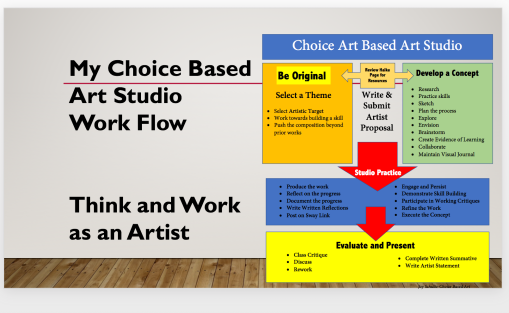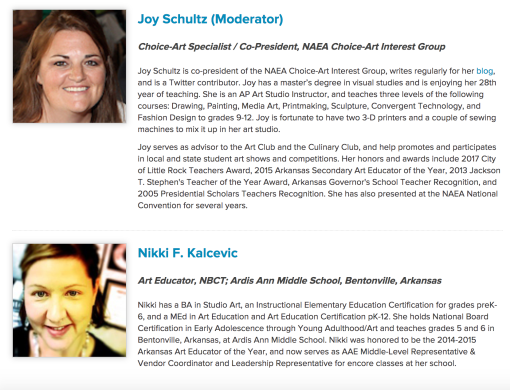Reflecting on my own personal method of creating art, I started brainstorming on how to create my Artist Proposal to help my students navigate the ChoiceArt studio. This helped me to create the work flow first and then the form was born. I created it to help my students be independent in the studio. I anchored the whole work flow with a Google form that I named the Artist Proposal.

When I created the form; I hit all the essentials I needed for recognizing the individual student and identifying the artists intentions. The form functions as a guide to layout and describe the students art concept, Theme, Artistic Targets, and to attach the Sway link code. The Sway link supports the selected concept with research, evidence of growth and experimentation (skill-building techniques), and written reflections with photographs/videos of the process. This year, I included my standard based assessment rubric, so my students will be able to measure what they are establishing and how much effort is required to achieve the level they wish to accomplish for the proposal.


I have several areas where the questions are marked with required and accumulate points for completion.
My Artist Proposal includes several questions that my students need to answer before submitting their proposal. The questions ask the “Why” they are making the project. What materials are you going to need? How is this project going to help you grow and develop? What was your inspiration? Why is this your focus at this time and how long do you feel this will take to complete?

I recommend you create an Artist Proposal that your students can understand and complete independently.
I created mine to support the environment and culture, I have created in my studio. Often my student’s create a Sway link first and then complete the Artist Proposal. My students have a clearer understanding of what they are striving to achieve, because they have already collected research, prepared sketches, and have a connection to the “why” for creating the piece.
My Google Form with the Artist Proposal then gathers the data I need to support them with materials, I can set-up work spaces and storage spaces, I gather additional support like research, exemplars, and skill building exercises. The data collected from the form also shows where my students are functioning throughout the semester. I can see when they are developing and or working for mastery. I can see what Themes are the most popular and what materials I need to stock up on. In addition to the Google form, I can show my students growth with their individual Sway links and written reflections. The class presentations are the bonus content that I leverage to help my students build confidence and level up their skills and voice.

My assessment forms are also Google forms and student’s answer questions reflecting on their accomplishments. The data collected from these additional forms help support the culture I am creating with ChoiceArt in my studio. I am supporting the creating and thinking. The end product is a bonus and the quality remains high because the students are engaged in the process and have a clear understanding of how to be successful.
I hope this blog post on the Artist Proposal is helpful. I have a week to relax and then it’s on to this year’s Arts Reveal Night. I have eight wonderful female artists lined up to present their work. The group ranges from experienced to only one quarter of studio experience. I know they have evolved so much but it’s time for them to step out and show the rest of our community.


 Wow!
Wow!




Recent Comments